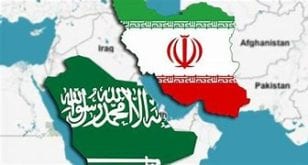iranintl – An Israeli drone killed top Hamas leader Saleh Al-Arouri Tuesday, on the eve of the fourth anniversary of the US killing of IRGC commander Qasem Soleimani.
Some hardline commentators in Iran are suggesting that the timing has been deliberate and all the more insulting. Al-Arouri was killed just as state-media in Iran broadcast images of mourners paying homage to Soleimani in his hometown of Kerman.
Iran’s permanent mission to the United Nations registered another protest on Tuesday, claiming a “legitimate right under international law to pursue legal proceedings to hold accountable and bring to justice perpetrators” of Soleimani’s killing.
Whether or not the timing was deliberate, it’s only natural that Soleimani’s name would be invoked in any such attack, since he played a crucial, perhaps unique, role in strengthening the multiplicity of armed groups which the Islamic Republic calls the Axis of Resistance –and many in the West call Iran proxies.
In more than two decades at the head of the IRGC’s Quds forces, Soleimani managed to create a loose but effective coalition of forces spanning from Yemen to Lebanon, all with domestic interest but united in their enmity towards Israel and the US.
In the past few days, state-affiliated media in Iran have published many accounts of Soleimani’s “achievements” in the region and beyond, including a lesser-known story of his role in the Bosnian war in the early 1990s.
In an interview with the IRGC-affiliated Tasnim News, former commander of IRGC forces in Syria Mohammad Jafar Asadi described how Soleimani got involved in a European civil war almost immediately after taking charge of the Quds Force.
“It was almost 1am. I was home. The phone rang. I picked up and it was Qasem [Soleimani]… He said I need these weapons. Write them down. I said, now? He said, “No questions, start writing.”
The weapons were delivered early in the morning and shipped to the Balkans, where Iran was supporting Muslim Bosnians.
Asadi then went on to talk about Soleimani’s role in Syria, claiming that he was the one to convince Vladimir Putin to commit the Russian air force in support of the Syrian dictator Bashar Assad.
Russia and Iran did indeed become ‘strategic’ allies in Syria, propping up the Assad regime in a brutal campaign that killed at least 300,000 and brought total destruction to large parts of the country.
Not much of a surprise that some Syrians celebrated Soleimani’s killing four years ago to the day.
Soleimani’s name once more became ubiquitous in Iran’s state-affiliated media after Hamas’ rampage of Israel on October 7, with many officials hailing the attack as an ultimate fruition of his efforts, while at the same time denying any direct involvement in the planning or execution of the operation.
In a long piece in the hardline paper Farhikhtegan, it’s claimed that Soleimani had a crucial hand in getting weapons into Gaza and even the West Bank –claims that are hard to verify or reject.
Moreover, Farhikhtegan revealed how Soleimani emphasized on domestic production of weapons in Gaza and Yemen –where Houthis have become a major headache, disrupting the flow of vessels in the Red Sea to and from the Suez Canal.
“He believed we should not limit our weapons support program to exports and teach them fishing so that they can make their own weapons… A considerable part of the Resistance’s weapons are manufactured in underground factories of Gaza. And it’s the same thing in Yemen.”
The targeted killing of Hamas leader Al-Arouri in Beirut could be the trigger many observers feared would draw in Hezbollah into a wider war with Israel. If that were to happen, if the Middle East were to be engulfed in a major war, Soleimani’s image would almost certainly be invoked again by all those involved, the outcome of that war notwithstanding.
 Shabtabnews In this dark night, I have lost my way – Arise from a corner, oh you the star of guidance.
Shabtabnews In this dark night, I have lost my way – Arise from a corner, oh you the star of guidance.



